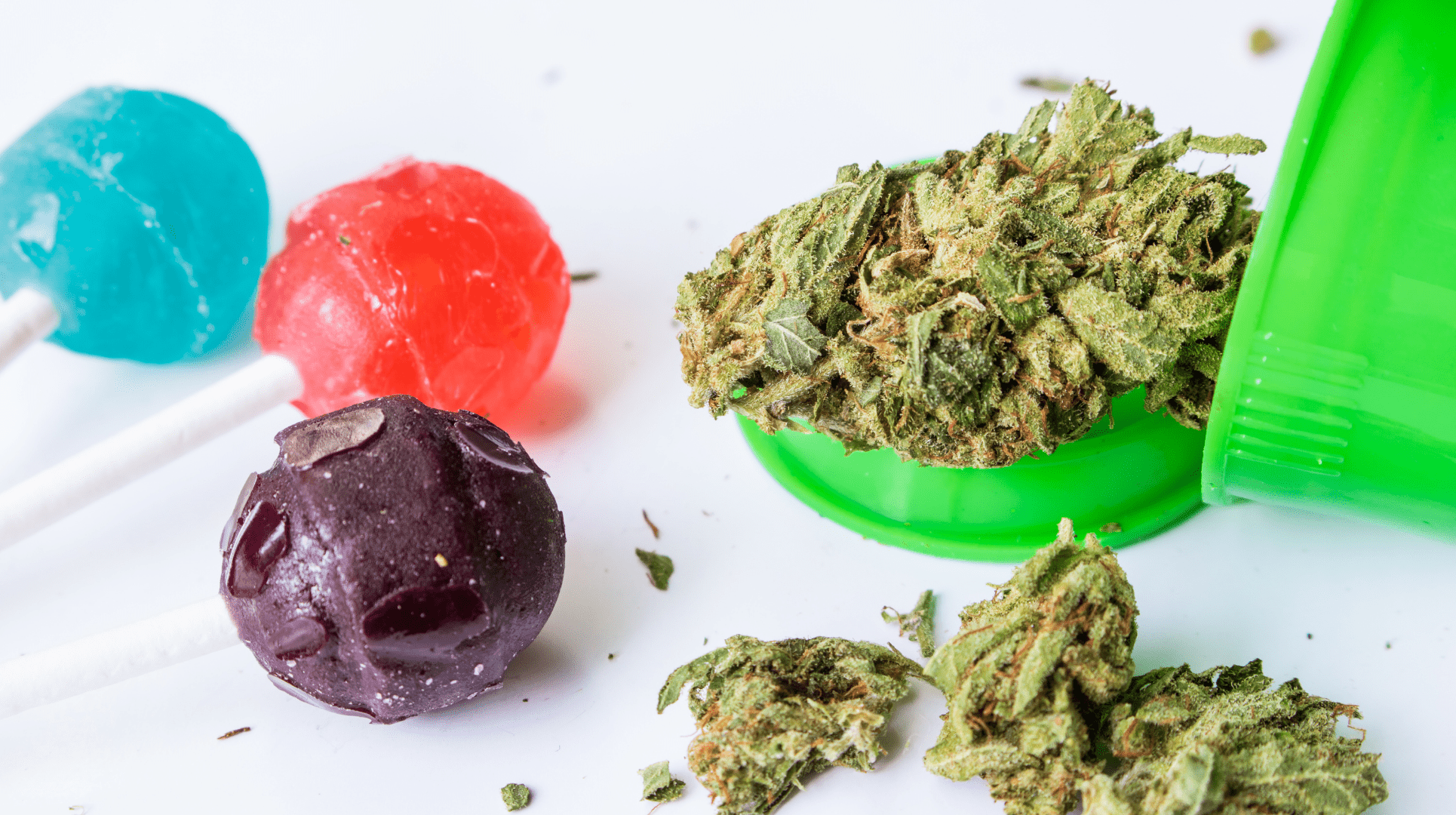
The pharmacology of THC edibles
There are many ways to take cannabis from smoking to brownies. There is even a dichotomy for some edibles. In other words, sucking on or swallowing a cannabis-infused candy, for example, will produce a different experience. To understand the different consumption methods, we need to delve into the pharmacology of cannabis and THC edibles.
How Cannabis Edibles Work – Oral THC
- beginning: 60-180 minutes
- duration: 6-8 hours
- bioavailability: ~6-14% with a 2.5 fold increase when formulated into a lipid (not nanoemulsified) and high variability depending on recent meals.
Active D9-THC takes time to get through the stomach and into the liver. And depending on the edibles’ formula, only a small percentage of that THC survives and can be absorbed by the body.
Once the remaining THC gets to the liver, a lot of biochemical stuff happens. First and foremost is the change that THC can undergo in a person’s gut that contains enough enzymes. A segment at the northern tip of the ring to the far left of THC changes from a methyl (-CH3) to a hydroxyl (-OH) group.
In order to bind to the cannabinoid receptor with a tendency to get high, fat-loving THC must contain at least one hydroxyl group. And while the converted form of THC, 11-OH-THC, contains one more hydroxyl group compared to D9-THC. How this affects intoxication is not well understood.
THC under the tongue – oromucous pharmacology
- beginning: 15-45 minutes
- duration: 6-8 hours
Atypical for oral consumption, sublingual doses produce a fraction of the hydroxylated cannabinoids. This is because cannabinoids that remain under the tongue go directly into the blood vessels and negate the liver pending a second pass.
For clinical applications, sublingual doses are optimal. Humans can possess vastly different gut microbiomes that orchestrate enzymes that break down THC. Therefore, quickly swallowed edibles are much more unpredictable in a large group of people. Although oral consumption has benefits in chronic diseases.
A cannabinoid-enriched edible that remains under the tongue is partially absorbed through the mucous membranes over the course of the month. Whatever cannabinoid is ingested, on the other hand, will pass through the liver. The same is true for terpenes, but there is less knowledge about their metabolism. Of course, for some people, the long shelf life of edibles is still a preferred consumption item.

Nano-emulsified THC edibles?
Experts believe that good sublingual formulations do not need to be nanoemulsified. However, products emulsified into sufficiently small droplets are absorbed into the blood prior to most metabolic conversions. Of course, the pharmacology also depends on the type of edible THC and emulsion.
Let us know your favorite consumption method in the comments. and not to forget to follow us @cannalifenet.
Sources
- Greene ML, Saunders DR. Metabolism of tetrahydrocannabinol by the small intestine. gastroenterology. 1974;66(3):365-372.
- Mechoulam R, Lander N, Varkony TH, et al. Stereochemical requirements for cannabinoid activity. J MedChem. 1980;23(10):1068-1072. doi:10.1021/jm00184a002
- MacCallum CA, Russo EB. Practical Considerations for Administering and Dosing Medical Cannabis. Eur J Intern Med. 2018;49:12-19. doi:10.1016/j.ejim.2018.01.004
- Stott CG, White L, Wright S, Wilbraham D… (2013). A phase I study to evaluate the effect of food on the bioavailability of a single dose of the THC/CBD oromucosal spray. , 69(4), 825-834. doi:10.1007/s00228-012-1393-4

Post a comment: